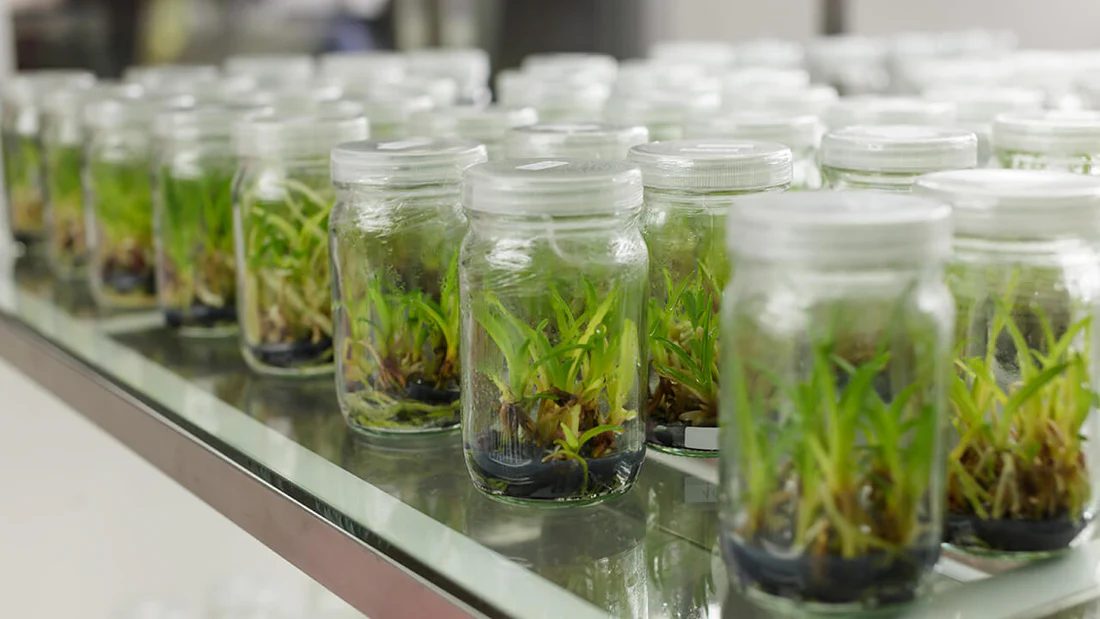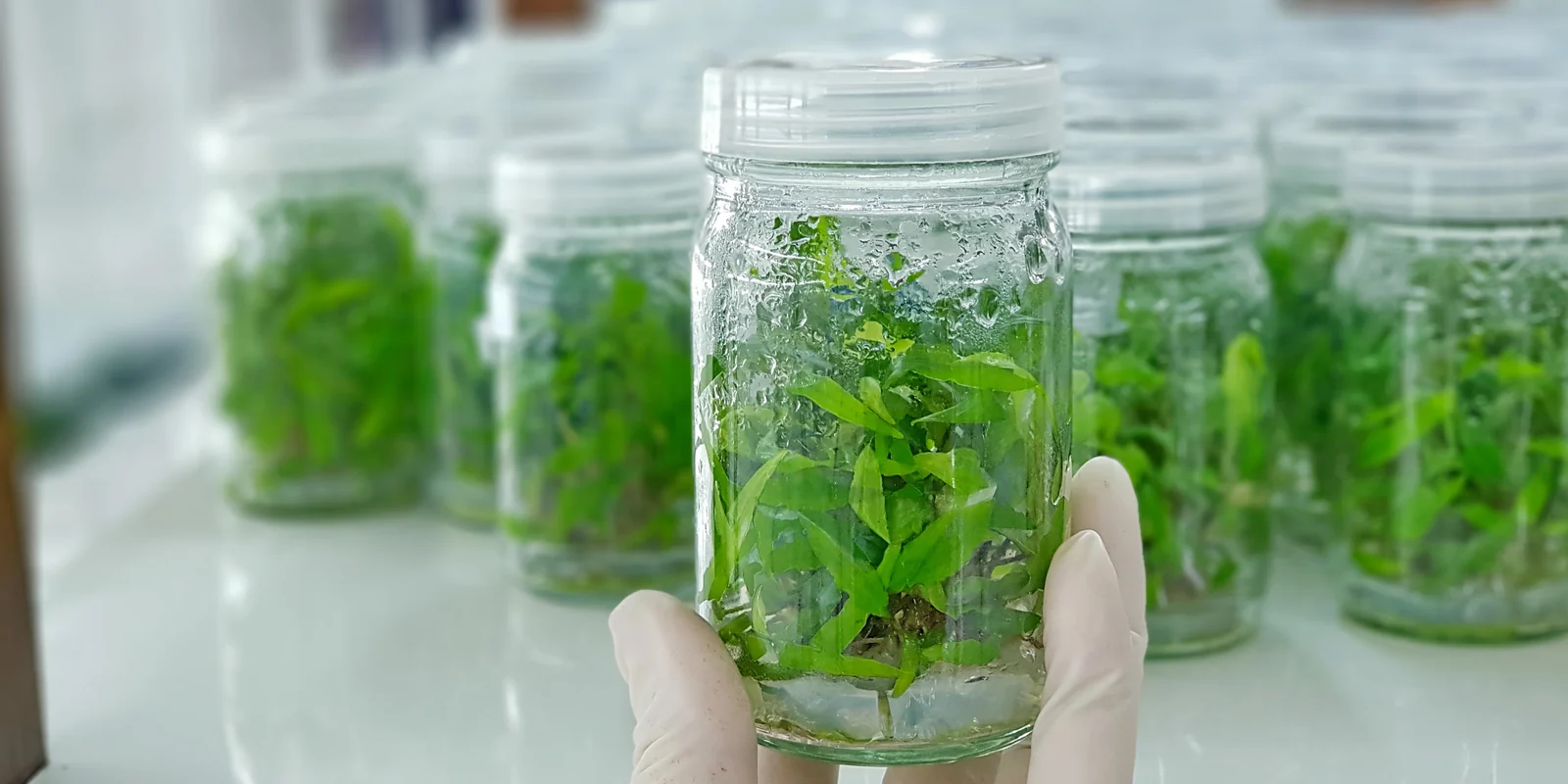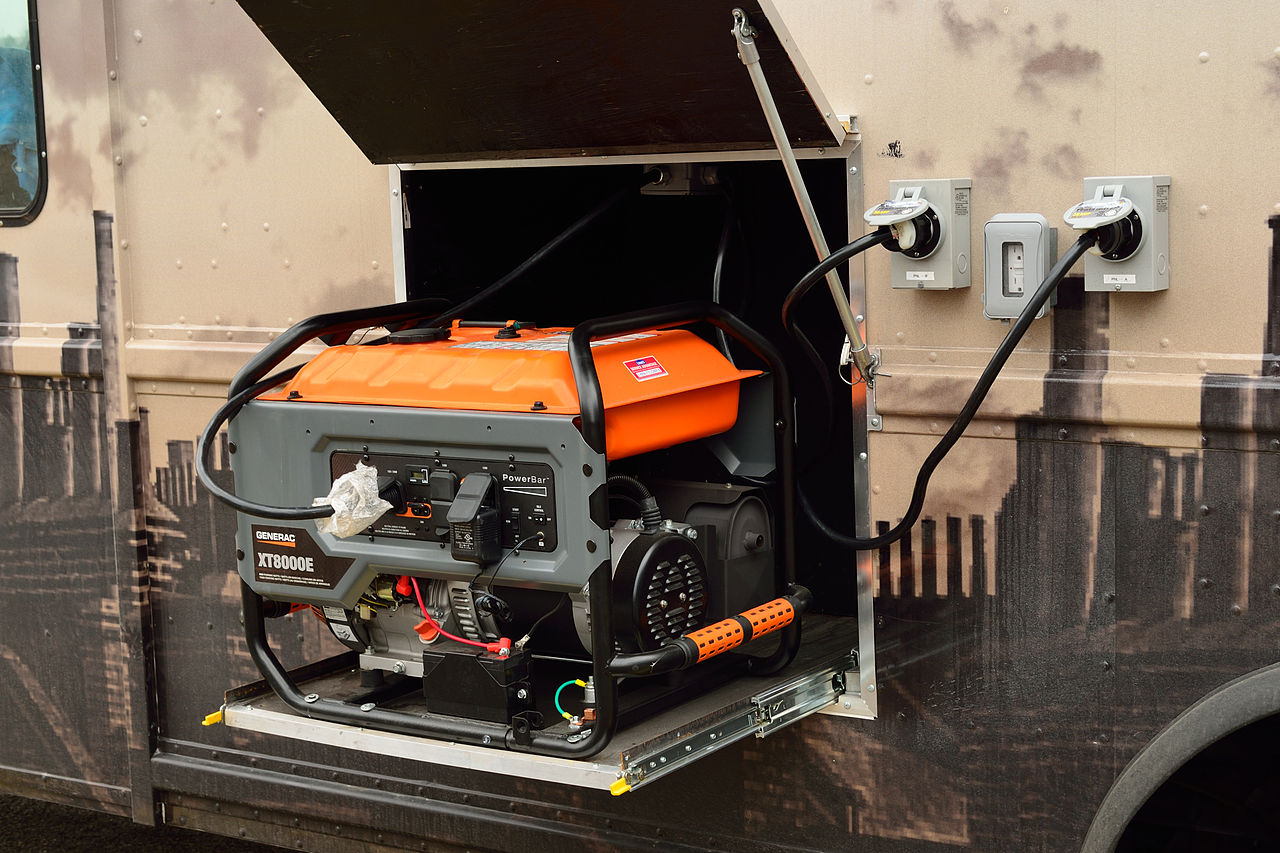Tissue culture plants provide remarkable benefits by producing thousands of genetically uniform and disease-free plantlets much faster than traditional methods. Banana farmers now achieve yields of 40-60 tons per hectare – triple the output of regular propagation techniques.
Plant tissue culture has transformed from a commercial technology to become more available for home growers. Plant enthusiasts can now find tissue culture plants for sale, including tissue culture aquarium plants. This piece shows how home growers can use this powerful technique. They can learn everything from simple fundamentals to becoming skilled at the acclimatization process to get optimal results.

What is Tissue Culture and Why It Matters
Plant tissue culture stands out as a breakthrough way to grow plants that has caught on with commercial growers and home enthusiasts. The method lets you grow plant cells, tissues, or organs in a sterile environment under controlled conditions. Traditional growing needs lots of space and time, but tissue culture helps produce many similar plants from a single parent plant much faster.
Understanding the simple aspects of plant tissue culture
Plant tissue culture builds on totipotency—a plant cell’s amazing power to grow into a complete plant. German botanist Gottlieb Haberlandt first brought up this idea in 1902, but major advances came in the 1930s and 1940s when scientists found plant growth regulators.
The tissue culture process starts when small bits of plant material called “explants” go into a sterile nutrient mix that has all the key ingredients for growth:
- Macronutrients (nitrogen, phosphorus, potassium)
- Micronutrients (iron, manganese, zinc)
- Carbon source (typically sucrose)
- Vitamins, amino acids, and growth regulators
These explants first turn into a hard brown lump called callus, which then grows into various plant organs or whole plants based on the hormones used. You need completely sterile conditions because one contamination can destroy all your plants.
Tissue culture comes in several forms based on the plant part you use. Meristem culture works well to eliminate disease, while organ culture keeps the structure and functions you want. It also includes callus culture, seed culture, protoplast culture, and embryo culture—each serving its own growing purpose.
Scientists call the plants from tissue culture “somaclones”—genetic copies of the parent plant. This method can create thousands or even millions of uniform plants each year, though most labs can only handle so many at once.
Plant tissue culture vs traditional growing methods
Regular growing methods like cuttings and seeds have limits that tissue culture beats. Cuttings need just the right temperature, humidity, and light, but tissue culture lets scientists control everything in the lab.
Regular methods take longer and aren’t as reliable. While cuttings slowly grow roots, tissue culture speeds up plant production by a lot. To name just one example, Thailand makes 50 million tissue-cultured plantlets yearly, making it the world’s biggest exporter of whole and cut orchids.
Disease control marks another vital difference. Old methods often pass diseases from parent to baby plants, but tissue culture starts clean and keeps plants healthy. This makes it perfect for growing clean plants for farms and gardens.
Genetic matching might be tissue culture’s biggest win over old methods. All tissue-cultured plants share the same genetic makeup, so they look and grow the same way. Farmers love this because they need plants with the same size, color, and crop yield.
Tissue culture does have its downsides compared to old methods. You need special knowledge, lab gear, and super clean conditions. The process costs more and needs more work. Plants grown this way also need time to get used to the outside world, so you must watch them closely during this change.
Even with these challenges, tissue culture remains a game-changing way to grow plants. It works great for rare, exotic, or hard-to-grow species that don’t do well with regular methods.
Why Tissue Culture Plants Are Ideal for Home Growers
Home growers who want to boost their success will find tissue culture plants offer clear advantages over traditional propagation methods. These scientifically proven benefits make these specially developed specimens a great choice for anyone who wants reliable and exceptional results.
Genetic consistency and disease resistance
Tissue culture creates plants with similar genetic material to the parent plant and delivers remarkable uniformity in all specimens. Home growers who need predictable results with every plant will find this genetic consistency valuable. Buyers can trust that each tissue culture plant they purchase will show the same desired traits in size, color, and yield.
Disease management stands out as one of the most important advantages for home gardeners. These plants grow in sterile environments under controlled conditions, which eliminates the risk of pathogen transmission. Research showed that tissue culture plants have much lower disease rates than conventional plants. One study revealed rhizome rot affected only 3.87% of tissue-cultured specimens while conventional plants saw 25.58% infection rates.
The process helps develop plants with improved disease resistance. Breeders can add desirable traits like pest and disease resistance that help home growers maintain healthier plants. This becomes crucial in greenhouse and indoor growing spaces where diseases can quickly spread between closely packed plants.

Faster growth and higher success rates
Plants from tissue culture show better performance that leads to success in home growing. These plants establish roots quickly, grow with more vigor, and reach greater heights than conventional specimens. A shorter, more uniform production cycle helps home growers who have limited space and time.
The yield differences are impressive. Tissue culture banana plants produce 30-45 kg bunches while conventional plants yield just 10-15 kg. These remarkable growth patterns come from starting with disease-free plantlets that grow without fighting pathogens.
Home growers who use tissue culture plants report:
- Quick establishment in soil or growing media
- Vigorous growth patterns
- Better survival during transplanting
- Uniform development across plants
Perfect for rare or exotic species
Tissue culture works best with plants that traditional methods struggle to propagate. Collectors of rare plants find tissue culture a practical way to grow species that seeds or cuttings cannot easily reproduce.
This method helps preserve endangered species by making large-scale propagation possible. Plant enthusiasts can now grow rare specimens that were once unavailable or too expensive.
Aquarium hobbyists benefit because tissue culture aquarium plants arrive free of snails, algae, and other unwanted hitchhikers common in conventional aquatic plants. Jar plants establish roots better in aquarium substrates because they have clean root systems and adapt well to humid environments.
Orchid enthusiasts get great value from tissue culture efficiency. Thailand produces 50 million tissue-cultured orchid plantlets each year, which makes rare varieties available to everyday growers at reasonable prices. Many exotic plants that were once expensive collector’s items are now affordable options for home growing.
How to Start with Tissue Culture Plants at Home
Home tissue culture has become easier than ever. You can start with just $300. This technique lets plant enthusiasts multiply their favorite plants efficiently at home instead of relying on commercial labs.
Where to find tissue culture plants for sale
Plant enthusiasts can now buy tissue culture plants from many sources. Several online retailers who focus on exotic plants sell tissue-cultured specimens in their collections. You’ll find rare varieties of Monstera, Alocasia, Anthurium, and Philodendron. These plants ship in sealed containers that stay sterile until they reach you.
Fish enthusiasts can get tissue culture aquarium plants from specialty fish stores and online aquatic suppliers. These “jar plants” come free of snails, algae, and other unwanted additions you might find in regular aquatic plants.
The best places to buy are nurseries that sell plants quickly. Plant quality depends on shelf time, so it’s best to buy from stores that move their inventory fast.
Choosing the right species for beginners
Start with herbaceous plants rather than woody ones. Woody plants release polyphenols that stop culture growth. Plant tissue culture experts recommend these plants for beginners:
- African Violet (Saintpaulia): The best plant to start with thanks to its high success rate and simple needs
- Philodendron varieties: These plants resist contamination well and have beautiful leaves
- Pothos (Epipremnum aureum): Known to be tough and adaptable to different conditions
- Monstera deliciosa: Easy to culture despite looking exotic
Most plants from the Solanaceae family (tomato, potato) work well with tissue culture. You’ll find lots of research about them too. Just avoid woody plants at first – they might discourage you early on.
Essential tools and setup for home propagation
Your home tissue culture needs a clean room with spaces for preparation, culture, and acclimatization. You don’t need expensive lab equipment. Here are some budget-friendly options:
A plastic box with an air filter works instead of a laminar flow hood. It costs between $50-$100 based on filter quality. A pressure cooker with a gage ($70-$120) replaces a commercial autoclave to sterilize your equipment and media.
You’ll need sterilized glass jars, scalpels, tweezers, and a pH meter or strips. Starter kits give you the basics – MS media, agar, and Plant Preservative Mixture (PPM). These cost around $80.
Light racks and growing spaces need another $25-$50. Plan to spend about the same on extras like ethanol, forceps, and petri dishes.
How to Acclimate Tissue Culture Plants Successfully
The bridge between lab success and thriving home-grown plants depends on proper acclimatization. Plants from tissue culture face major challenges as they adapt from their sterile, high-humidity environments to normal growing conditions. The right acclimatization methods help these delicate specimens survive and reduce their stress.
Step-by-step acclimatization process
Let your newly purchased tissue culture plants rest for 24-48 hours before you start the acclimatization process. The next step requires you to remove plantlets from containers and clean off all gel media with lukewarm water. This cleaning step matters because any leftover gel becomes a perfect environment for harmful fungi.
Use sterilized tools to cut away yellowed or damaged leaves. Many growers give plants a quick fungicide bath (with products like Physan 20 or Captan) for 5-10 minutes and rinse them again with clean water.
Move your cleaned plantlets to sterile media instead of regular soil. Place plant roots in a small hole and cover them while keeping shoots above the medium. Your potted plantlets need a clear plastic dome or container to create a mini-greenhouse effect that maintains humidity levels of 80-90%.
Plants need 4-8 weeks to adapt to ambient conditions. Keep the humidity dome sealed completely for 7 days. You can then make small ventilation holes or open the container briefly each day. As plants develop new growth, increase their exposure time to air.
Common mistakes and how to avoid them
Root rot from leftover gel is the biggest problem growers face. Expert growers suggest multiple root washings—”If you think you’ve cleaned enough, clean three more times”.
Quick drops in humidity cause water loss through underdeveloped leaf cuticles. Research shows high-humidity plants develop faulty stomata that can’t control moisture well. Create a 7-10 day schedule with steady increases in ventilation time rather than exposing plants immediately.
Light exposure needs careful management. Start with low-intensity, indirect light and slowly increase exposure over several weeks. Plants adapt best in stable temperatures between 22-25°C (68-77°F).
Best substrates and humidity control tips
Choose substrates that match your plant’s needs. These media prove effective for most species:
- Sphagnum moss (excellent for carnivorous plants)
- 50:50 mix of perlite and peat
- Fluval stratum (particularly effective for aquatic plants)
- Vermiculite or coco husk mixtures
Humidity management starts with sealed containers showing condensation inside—this shows 100% humidity. A heat mat speeds up adaptation in cool environments. Be careful not to combine it with bright light that could harm young plantlets.
Plants should be ready for larger containers with traditional potting media after 4-8 weeks of reduced humidity and increased light exposure.
Tissue Culture Aquarium Plants and Other Use Cases
Aquarium enthusiasts have found a revolutionary way to grow plants through tissue culture technology. This specialized method to propagate plants gives amazing benefits for underwater landscapes and opens creative possibilities beyond the aquatic world.
Why aquarium hobbyists prefer tissue culture plants
Tissue culture aquarium plants’ biggest advantage is their complete sterility. These plants are 100% free from pests, algae, and unwanted hitchhikers that usually come with regular aquatic plants. Tank owners can rest easy knowing their setups won’t get invaded by snails, planaria, or harmful pathogens.
Shrimp keepers love these plants because they don’t contain harmful pesticides or chemicals that could hurt their delicate creatures. The plants might cost more upfront, but each container gives you substantially more plantlets—sometimes ten times more than potted plants.
Getting these plants ready couldn’t be easier. You just need to rinse off the nutrient gel and separate the tiny plantlets before planting. The plants need time to adjust as they move from sterile lab conditions to bacteria-rich aquarium environments.
Tissue culture also helps protect certain species. Many experts suggest buying tissue culture Bucephalandra instead of wild-harvested ones to protect local ecosystems and wildlife.
Using jar plants for decorative and functional setups
Tissue culture plants are a chance to give unique gifts. These “plants in jars” show thoughtfulness and care while giving recipients living gifts that keep growing. Each jar can match the recipient’s priorities with custom decorations like ribbons or personal tags.
Jar plants fit perfectly in homes or offices because of their contained environment. Their clean, simple look matches modern decor and helps improve air quality too.
Clean tools, workspace, and containers are crucial to prepare jar plants as gifts. Recipients can enjoy these special living presents for a long time with the right care instructions, making them memorable alternatives to regular gifts.
Tissue culture technology has changed plant propagation from a commercial venture into an available method for home gardeners. This scientific breakthrough helps growers produce similar, disease-free plants that achieve soaring wins with plants of all types.
Home growers now enjoy tissue culture’s many benefits, especially when they work with rare or exotic specimens. These plants grow faster, show more vigor, and resist diseases better than traditional propagation methods. Aquarium hobbyists value these tissue cultured specimens because they stay clean and free from unwanted organisms.
Tissue culture needs extra care as plants adjust to their environment. The plants thrive when growers keep proper humidity levels, use the right growing media, and help plants adapt to normal conditions step by step.
Plant tissue culture stands as one of the most important advances for hobbyists who want reliable ways to grow plants. This technique helps home growers achieve professional results while they protect species and support eco-friendly plant growing methods.
Here are some FAQs about tissue culture plants:
What plants grow by tissue culture?
Many plants can be propagated through tissue culture, including popular aquarium varieties like Anubias, Bucephalandra, and Cryptocoryne that are often sold as tissue culture aquarium plants. Orchids, strawberries, and bananas are also commonly grown as tissue culture plants for sale in the horticulture industry. Even rare or endangered species are preserved through this method by tissue culture plants wholesale suppliers.
What is plant tissue culture?
Plant tissue culture is a laboratory technique that grows plants from small tissue samples in sterile conditions. This method produces tissue culture plants that are disease-free and genetically identical to the parent plant. Many aquarium enthusiasts use tissue culture aquarium plants because they come pest-free and ready for tank introduction.
Are tissue culture plants worth it?
Tissue culture plants are absolutely worth it for their pest-free guarantee and consistent quality, especially for tissue culture aquarium plants that avoid introducing snails or algae to tanks. While slightly more expensive initially than traditional plants, tissue culture plants for sale often grow better long-term since they start disease-free. Their compact packaging also makes tissue culture plants wholesale purchases more efficient for retailers.
What are the disadvantages of plant tissue culture?
The main disadvantages include higher initial costs for tissue culture plants compared to traditional propagation methods. Learning how to acclimate tissue culture plants properly can also be challenging for beginners. Additionally, tissue culture plants wholesale operations require significant laboratory equipment and expertise to maintain sterile conditions during production.
What is the easiest plant to tissue culture?
African violets are considered one of the easiest plants for beginners to culture, though many aquatic species like Java fern are also simple for producing tissue culture aquarium plants. These species respond well to tissue culture techniques and are commonly available as tissue culture plants for sale. Their hardiness makes them ideal for those learning how to acclimate tissue culture plants.
How to keep tissue culture plants alive?
To maintain tissue culture plants, carefully follow instructions on how to acclimate tissue culture plants to normal conditions after removing them from sterile containers. For tissue culture aquarium plants, rinse off the nutrient gel thoroughly before planting in your tank. Keep humidity high initially and gradually expose them to normal growing conditions over 1-2 weeks.
How to do tissue culture at home?
Home tissue culture requires a sterile workspace, growth media, and proper containers to grow tissue culture plants successfully. While challenging, hobbyists can produce small batches of tissue culture aquarium plants with basic lab equipment. Many learn using starter kits before attempting tissue culture plants wholesale production. Strict sterilization is crucial to prevent contamination.
What is the difference between micropropagation and tissue culture?
Micropropagation specifically refers to multiplying plants through tissue culture techniques, while tissue culture is the broader process of growing any plant cells or tissues artificially. All tissue culture aquarium plants are created via micropropagation methods. Essentially, micropropagation is one application of plant tissue culture technology used by tissue culture plants wholesale producers.
What is tissue culture banana?
Tissue culture bananas are disease-free plants produced through laboratory propagation of banana plant cells. These tissue culture plants offer higher yields and better disease resistance than traditionally grown bananas. The same sterile techniques used for tissue culture aquarium plants are applied to banana cultivation on a much larger commercial scale by tissue culture plants wholesale operations.









